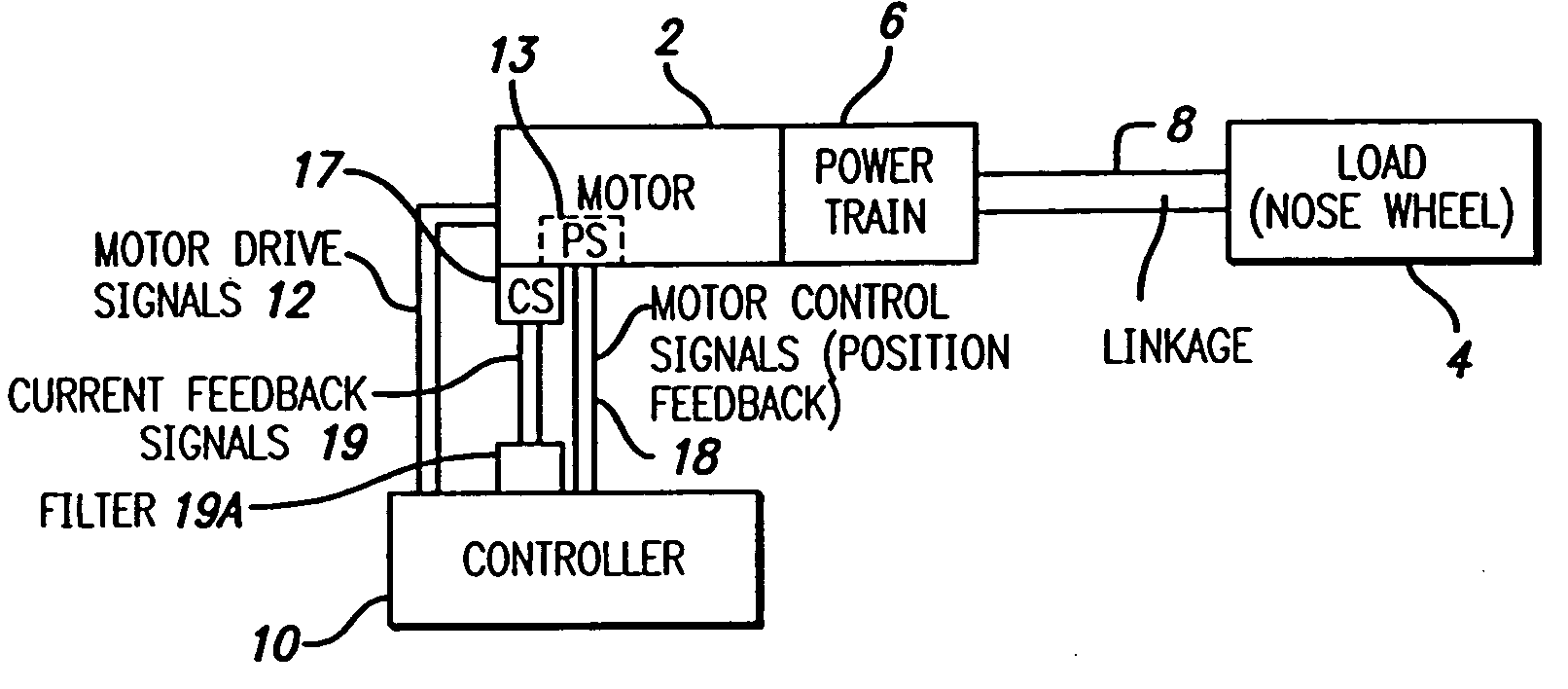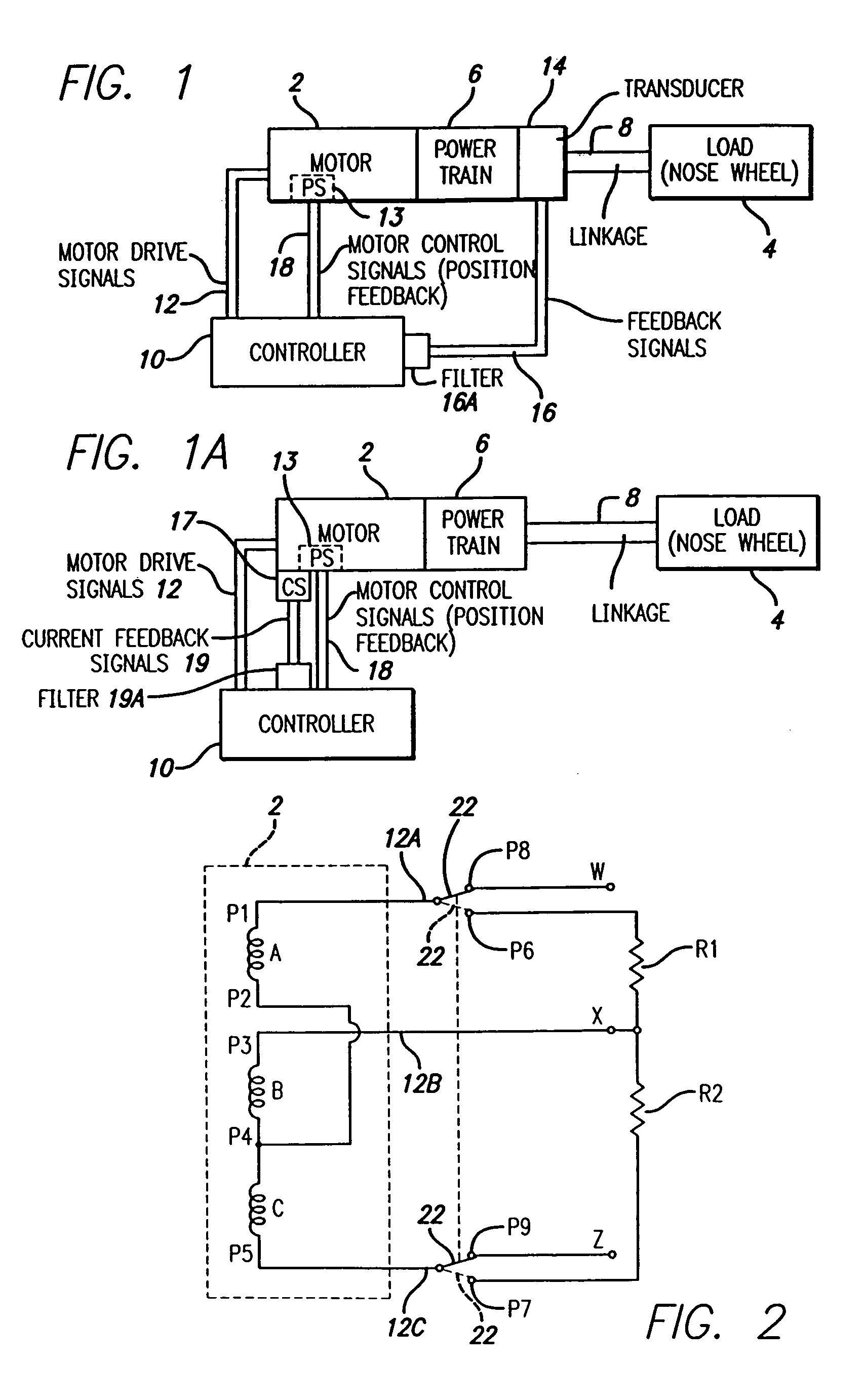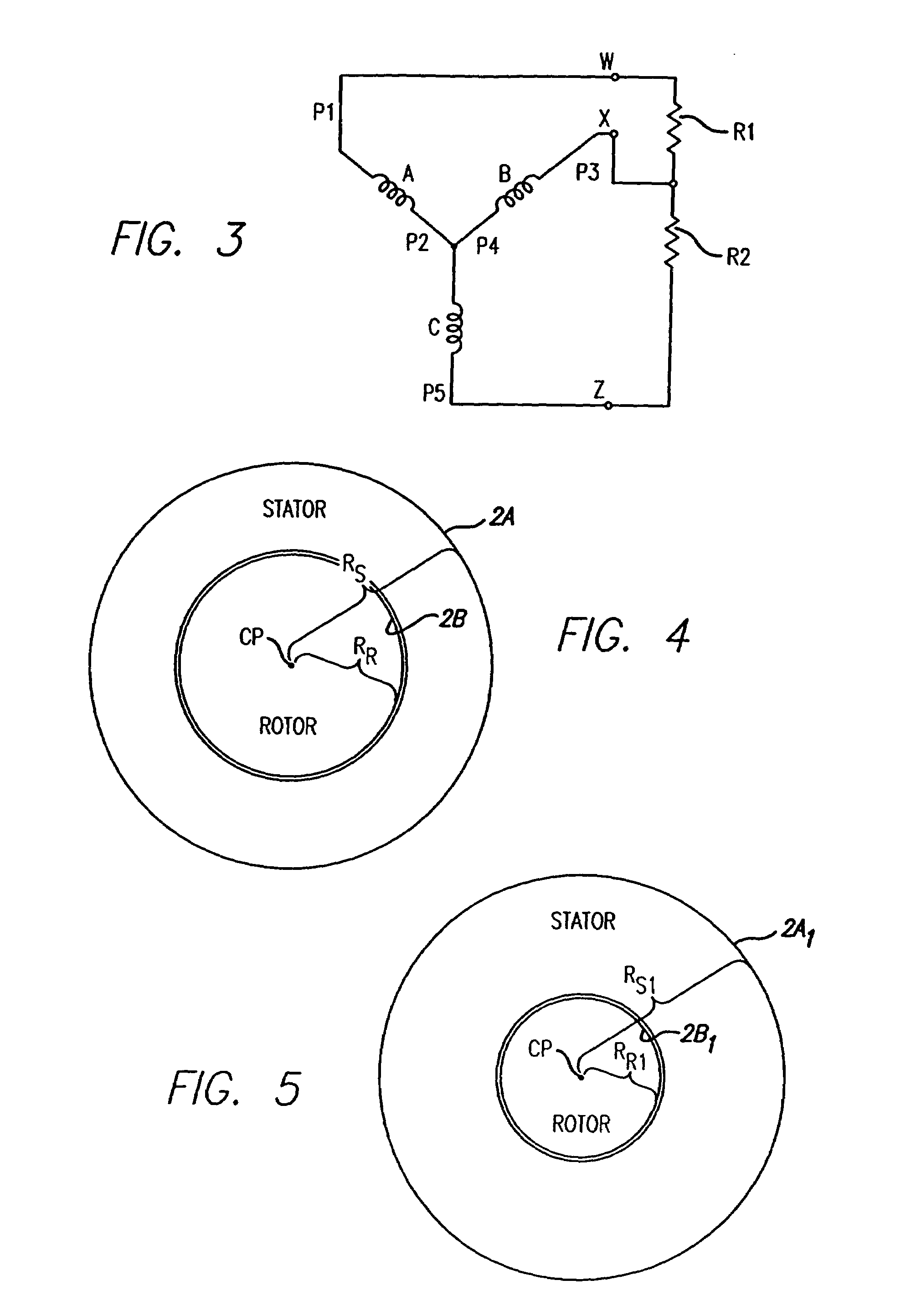Damping for electromechanical actuators
a technology of electromechanical actuators and damping, applied in the direction of computer control, program control, instruments, etc., can solve the problems of reducing the life of system components, shimmy or oscillation of the nose wheel, damage to the system components, etc., and achieve the effect of substantially reducing the inertia of the electric motor
- Summary
- Abstract
- Description
- Claims
- Application Information
AI Technical Summary
Benefits of technology
Problems solved by technology
Method used
Image
Examples
Embodiment Construction
)
[0033]In a first embodiment of the invention, a steering control system for a load, e.g., an aircraft nose wheel uses an electric motor. Specifically, as shown in FIG. 1, a steering control system includes an electric motor 2 for moving a load 4 via a power train 6 and mechanical linkage 8. As is well known in the art, power train 6 typically ends in an output shaft (not shown) by which linkage 8 may connect to the power train 6.
[0034]A controller 10 sends motor drive signals 12 to motor 2 so that load 4 is driven to a desired position. A position sensor (PS) 13 senses position of load 4, e.g., by sensing the position of part of the motor or the motor output shaft as may be done in a typical servo motor. As is also typical, the position signals are used as motor control signals 18 which provide position feedback to a controller 10. If load 4 moves from the desired position, controller 10 is programmed to send motor drive signals 12 as necessary to move load 4 back to the desired po...
PUM
 Login to View More
Login to View More Abstract
Description
Claims
Application Information
 Login to View More
Login to View More - R&D
- Intellectual Property
- Life Sciences
- Materials
- Tech Scout
- Unparalleled Data Quality
- Higher Quality Content
- 60% Fewer Hallucinations
Browse by: Latest US Patents, China's latest patents, Technical Efficacy Thesaurus, Application Domain, Technology Topic, Popular Technical Reports.
© 2025 PatSnap. All rights reserved.Legal|Privacy policy|Modern Slavery Act Transparency Statement|Sitemap|About US| Contact US: help@patsnap.com



